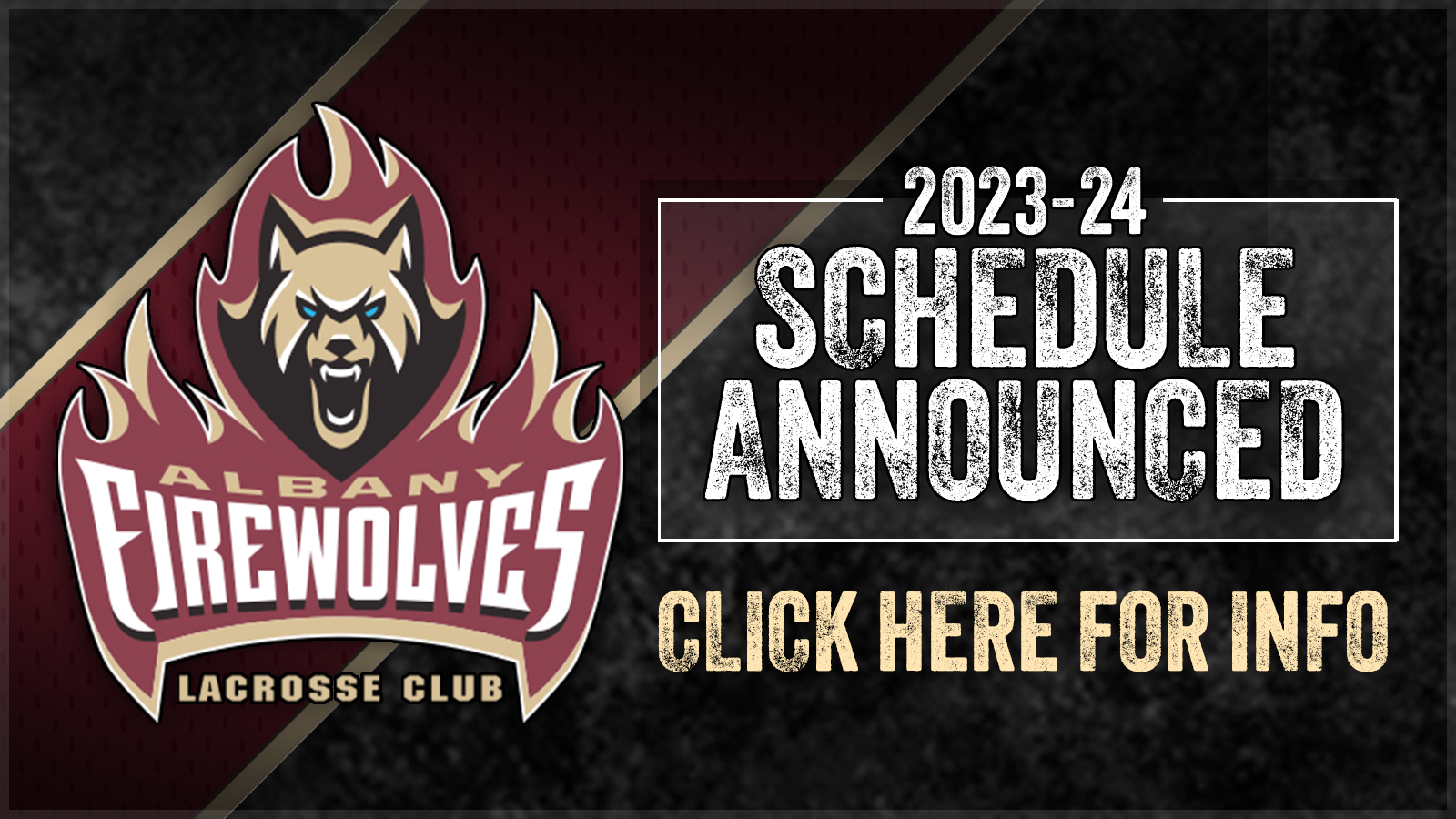Lacrosse is a thrilling and fast-paced sport that combines elements of soccer, basketball, and hockey, played with a unique twist. Whether you are a new fan of the Albany FireWolves Lacrosse Club or a die-hard lacrosse fan, understanding the fundamentals of lacrosse is crucial. In this fan’s guide to lacrosse, we will break down the basics, including the rules, positions, and strategies, to help you navigate the world of box lacrosse with confidence.
Lacrosse Rules: The Essentials
Understanding lacrosse rules is critical to enjoying the game as a spectator. Lacrosse traces its origins back to games indigenous tribes played in North America for hundreds of years, but the current codified lacrosse rules probably look a bit different than they once did. The Albany FireWolves play a version of lacrosse known as box lacrosse, which takes place indoors on a hockey rink with the ice covered and walls intact, which keeps the ball inbounds. Box lacrosse specifically originated in the 1920s.
Game Objective
Lacrosse basics start with the simple objective of the game, which is to score more goals than the opposing team within the game’s allotted time. This is achieved by using a lacrosse stick to catch, carry, pass, and shoot a small rubber ball into the opponent’s goal. Lacrosse is played on a field or arena with goals at each end, and teams compete to advance the ball down the field and ultimately score by shooting it into the opposing team’s net. The team with the most goals at the end of the game is declared the winner.
Teams
Lacrosse is played between two teams per game. As of 2024, the National Lacrosse League (NLL) consists of 15 teams across the United States and Canada, including the Albany FireWolves. Each team plays a regular season schedule of 18 games, with eight teams qualifying for postseason play.
Duration
Box lacrosse games consist of four, 15-minute quarters with a break of two minutes between quarters and a 15-minute halftime. Teams are allotted one 45-second timeout per half of game play. If a game ends in a tie, box lacrosse employs a sudden-victory overtime period where the first team to score a goal wins. More than one overtime period can be played if necessary.
Penalties
A variety of infractions in box lacrosse can result in three types of penalties:
- Loss of Possession: A team can lose possession of the ball in the case of infractions such as illegal screens, shot clock violations, eight-second half-court violations, a loose ball push (pushing another player more than five yards from a loose ball), or illegal procedures during face-offs.
- Minor Penalty: Infractions such as delay of game, elbowing, holding, illegal crosschecking, slashing, and tripping can result in a minor penalty. For a minor penalty, the player in the penalty box stays there for two minutes or until the opposing team scores one goal, whichever comes first.
- Major Penalty: Infractions such as high sticking (raising the lacrosse stick above the shoulder of your opponent), boarding (attempting to push any player in the boards), face masking (grabbing another player’s face mask), fighting, and spearing (leading with the helmet) can result in five minutes in the penalty box. The player in the penalty box stays there for five minutes or until the opposing team scores two goals, whichever comes first.

Lacrosse Positions: Understanding the Players
In box lacrosse, players occupy several lacrosse positions. These positions include: forward, transition, defense, and goalie.
Forwards/Transition/Defensemen/Goalies
Each position in box lacrosse has its own role to play that is critical to team success.
- Forward: Forwards primarily focus on scoring goals. They typically stay in the offensive zone and work to create scoring opportunities by dodging defenders, setting picks for teammates, shooting, and passing the ball to teammates.
- Transition: A mix of forwards and defensemen, transition players can play on either side of the floor. They excel at getting the ball from one end of the floor to the other quickly and scoring on fast breaks, a change of possession from defense to offense before an opponent can swap their full defense out onto the floor.
- Defense: Defensemen work to prevent the opposing team from scoring by closely guarding attacking players, intercepting passes, switching through picks, and disrupting offensive plays. They play primarily in the defensive zone and work to protect their own goals.
- Goalie: Goalies are the last line of defense and play a crucial role in preventing the opposing team from scoring by minding the net. They use a larger stick and their body to block shots on the goal.
Within these broad positions, there may be additional roles and responsibilities based on team strategy and player skill sets. For example, some teams may employ specialized face-off specialists who focus on winning face-offs and gaining possession of the ball at the beginning of each period or after a goal. Additionally, in box lacrosse, players may rotate between offensive and defensive roles more fluidly due to the smaller playing area and faster pace of the game.
Basic Lacrosse Strategies
Lacrosse teams implement several common game-play strategies to gain the upper hand during a game. Lacrosse strategies are designed to improve the chances for goal scoring and keep the opposing team on their toes.
Clearing and Transition
Clearing refers to a team’s ability to move the ball from their defensive end to the offensive end. When a team can clear the ball quickly and set up an advantageous transition, they may have a scoring opportunity.
A transition opportunity may also employ a fast break, in which players quickly transition from defense to offense or vice versa, taking advantage of a momentary numerical advantage. This strategy relies on speed, quick passing, and efficient decision-making to create scoring opportunities before the opposing defense can set up. Clearing and transitioning strategies rely on effective passing, communication, and field awareness to maintain possession or regain possession of the ball.
Offensive Tactics/Defensive Tactics
In box lacrosse, there are 5 offensive and 5 defensive players on the floor at a time as well as the 2 goalies. Offensive situations during the game include regular 5 on 5 play and extra man situations or “power plays.” The 30 second shot clock begins once the ball is picked up by a team’s defense and carried up the floor into the offensive zone. The shot clock can be reset when the ball is shot and hits the goalie or by loose ball pushes and other violations by the defense.
Offense
- 5 on 5: With only 30 seconds to create a scoring opportunity, offensive players must move the ball quickly and work together to find an opening to shoot the ball past the goalie. The offensive strategy in box lacrosse is similar to that of basketball with the offensive players using picks and screens to get open and create space for someone to shoot. Players can dodge 1 on 1 against their defender to try and get a scoring chance or look for open teammates who are working to get open off ball. Offensive players cannot go into the crease around the goal but can go behind the net and will often attempt a dunk shot.
- 5 on 4: When a player on one of the teams commits a penalty, the other team will go on the power play where they will have an extra offensive player and an advantage to score. The defense will form a box and the offense will move the ball quickly and set picks to create an opening to shoot.
- Players who shoot right (right hand is held closest to the head/pocket) normally play the left side of the offense and vice versa for those players who shoot left. This is so that the head of the stick and the ball are closer to the center of the playing surface. This is very important when cutting to the net to take a shot.
Defense
- 5 on 5: Defensive players must communicate constantly to work through picks, screens, and to slide if one of their defenders gets beat by an offensive player. The defense’s goal during a 30 second possession is to stop the offensive players from getting to the middle of the floor with the ball where they have a clear shot at the goalie. Defenders are allowed to use their stick to check and push the offensive players to where they want them to go or stop them from getting open.
- 5 on 4: In a penalty kill situation where the defense is down one player, the four defenders will form a box that allows them to block passes and close the angles of the offensive players shooting lanes. The defense will rotate when needed as the offense moves the ball around quickly or sets picks. They will position themselves so that their goalie has the best view of the shooter each time the ball is moved to a different player.
- Once the goalie makes a save or a defender picks up the ball, the defense will carry the ball up the floor and they will then head to the bench to give the ball to the offense.

Face-offs and Loose Balls
Face-offs are critical moments in a lacrosse game, as they determine which team gains possession of the ball. Many lacrosse teams designate face-off specialists who adopt specific stances and techniques to gain an advantage during a face-off, including hand placement on the stick, body positioning, and footwork.
Loose balls are a ball that is not possessed by a player in their stick that players must scoop up to gain possession. Winning loose ball battles is crucial for maintaining possession, creating scoring opportunities, and controlling the pace of the game. Teams often emphasize loose ball drills and techniques to improve their chances of winning these contests.
Shot Selection
Shot selection in lacrosse is crucial for maximizing scoring opportunities and increasing the likelihood of scoring goals. Shot selection is the skill of choosing when and from where to make a shot on goal. Players should wait for the right moment to shoot, rather than rushing a shot under pressure or from a difficult position. Being patient and waiting for openings or defensive breakdowns can lead to higher-quality scoring opportunities.
Lacrosse players have various types of shots at their disposal, including overhand shots, sidearm shots, underhand shots, bounce shots, and behind-the-back shots, among others. Players should select the appropriate shot based on the situation, the goalie’s positioning, and the defensive pressure they face.
For fans that take the time to learn box lacrosse rules and understand the different strategies, the excitement of an Albany FireWolves game will only grow. Check the schedule and get tickets today to see your FireWolves in action!






